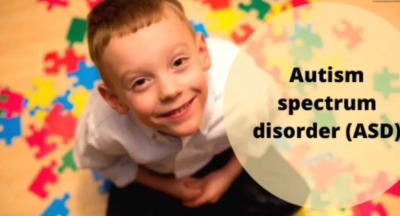
Understanding Cognitive Behavioral Therapy (CBT) and Its Key Concepts
Cognitive Behavioral Therapy (CBT) is a widely recognized and evidence-based form of psychotherapy that focuses on the connection between thoughts, emotions, and behaviors. Developed by Dr. Aaron T. Beck in the 1960s, CBT has since become one of the most effective and widely used therapeutic approaches for a range of mental health conditions.
What is CBT?
CBT is a goal-oriented therapy that aims to help individuals identify and change negative thought patterns and behaviors that contribute to their emotional distress. It operates on the premise that our thoughts influence our emotions, which in turn affect our behaviors. By identifying and challenging unhelpful thoughts and beliefs, individuals can develop more adaptive ways of thinking and coping with life’s challenges.
Who Developed CBT?
CBT was developed by Dr. Aaron T. Beck, a psychiatrist and psychotherapist, in the 1960s. Initially, Beck was working with patients suffering from depression and noticed that their thought patterns were consistently negative and distorted. He hypothesized that by challenging these negative thoughts and replacing them with more realistic and positive ones, he could help alleviate their symptoms. This led to the development of CBT as a structured and evidence-based approach to therapy.
30 Important Concepts of CBT
1. Automatic Thoughts: These are the immediate and often unconscious thoughts that arise in response to a situation or trigger.
2. Cognitive Distortions: These are irrational and inaccurate thought patterns that can lead to negative emotions and behaviors.
3. Core Beliefs: Deeply ingrained beliefs about oneself, others, and the world that shape our thoughts and behaviors.
4. Cognitive Restructuring: The process of identifying and challenging negative thoughts and replacing them with more realistic and positive ones.
5. Behavioral Activation: Engaging in activities that bring pleasure and a sense of accomplishment to counteract depression and low mood.
6. Exposure Therapy: Gradual and controlled exposure to feared situations or triggers to reduce anxiety and phobias.
7. Thought Record: A tool used to identify, analyze, and challenge negative thoughts and beliefs.
8. Socratic Questioning: A method of inquiry used to help individuals examine and challenge their thoughts and beliefs.
9. Self-Monitoring: Keeping track of thoughts, emotions, and behaviors to identify patterns and triggers.
10. Cognitive Triad: The interrelationship between thoughts, emotions, and behaviors.
11. Catastrophic Thinking: Exaggerating the potential negative outcomes of a situation.
12. Overgeneralization: Drawing broad conclusions based on limited evidence or a single negative experience.
13. Personalization: Assuming responsibility or blame for events that are beyond one’s control.
14. Filtering: Focusing only on the negative aspects of a situation while ignoring the positive.
15. Mind Reading: Assuming that we know what others are thinking or feeling without evidence.
16. All-or-Nothing Thinking: Viewing situations as either black or white, with no room for shades of gray.
17. Emotional Reasoning: Believing that our emotions reflect the objective reality of a situation.
18. Cognitive Behavioral Model: A visual representation of the relationship between thoughts, emotions, and behaviors.
19. Coping Skills: Strategies and techniques to manage stress, anxiety, and other emotional difficulties.
20. Homework Assignments: Tasks given to individuals to practice new skills and reinforce therapy sessions.
21. Relapse Prevention: Identifying and planning for potential setbacks to maintain progress.
22. Graded Exposure: Gradually increasing exposure to feared situations or triggers in a controlled manner.
23. Cognitive Reappraisal: Reevaluating and reframing thoughts and beliefs to change emotional responses.
24. Problem-Solving Skills: Techniques to identify and address specific problems or challenges.
25. Decatastrophizing: Challenging and reducing the perceived severity of a feared or negative outcome.
26. Assertiveness Training: Learning to express thoughts, feelings, and needs in a clear and respectful manner.
27. Self-Efficacy: Belief in one’s ability to successfully cope with and overcome challenges.
28. Goal Setting: Establishing specific, measurable, achievable, relevant, and time-bound objectives.
29. Thought Stopping: Interrupting and replacing negative thoughts with more positive or realistic ones.
30. Empirical Evaluation: Testing the validity of thoughts and beliefs through evidence and logical reasoning.
These concepts form the foundation of CBT and are used by therapists to help individuals gain insight, challenge unhelpful thoughts, and develop healthier coping strategies. By applying these concepts, individuals can experience significant improvements in their mental well-being and overall quality of life.
Related Posts
Understanding Autism Spectrum Disorder as per DSM-5-TR
The Diagnostic and Statistical Manual of Mental Disorders, 5th Edition, Text...
Understanding Cognitive Behavioral Therapy (CBT) and Its Key Concepts
Cognitive Behavioral Therapy (CBT) is a widely recognized and evidence-based form...
The Importance of Mental Health in Children
Introduction Mental health is a crucial aspect of overall well-being, and this...
Understanding Cognitive Behaviour Therapy and Symptoms of PTSD
https://www.youtube.com/watch?v=Nktr6ZLUJvQhttps://www.youtube.com/watch?v=Nktr6ZL...




